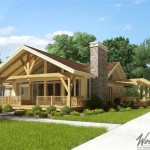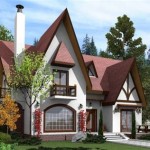Country House Floor Plans: Essential Considerations
Country houses exude an atmosphere of tranquility and elegance, offering a respite from the hustle and bustle of urban life. When designing the floor plan for a country house, it is essential to consider various aspects to create a functional, comfortable, and aesthetically pleasing living space.
1. Location and Orientation
The location and orientation of the house play a crucial role in maximizing natural light and ventilation. Consider the sun's path and prevailing wind patterns to position the house for optimum natural lighting, warmth, and cross-ventilation. This will reduce energy consumption and create a more comfortable living environment.
2. Room Flow and Circulation
The floor plan should facilitate seamless movement between rooms and outdoor spaces. Create a logical flow by connecting common areas, such as the living room and dining room, and ensuring easy access to bedrooms and bathrooms. Consider the size and shape of rooms, as well as the placement of doors and windows, to optimize circulation and create a sense of spaciousness.
3. Functional Zones
Divide the house into functional zones to create distinct areas for different activities. For example, a public zone might include the living room, dining room, and kitchen, while a private zone could encompass bedrooms and bathrooms. By separating these zones, you enhance privacy and create a more organized and efficient living space.
4. Natural Light and Ventilation
Country houses should embrace natural light and ventilation. Large windows and skylights allow ample sunlight to flood the interior, creating a bright and airy ambiance. Cross-ventilation promotes air circulation, reducing the need for artificial cooling and heating systems. Consider the placement of windows and doors to maximize natural light and airflow throughout the house.
5. Outdoor Spaces
Outdoor spaces are an integral part of country house living. Incorporate features such as patios, decks, and balconies to extend the living area outdoors. Consider the transition between indoor and outdoor spaces to create a seamless connection between the two.
6. Storage and Utility Spaces
Adequate storage and utility spaces are essential for a well-organized and functional country house. Plan for built-in closets, pantries, and laundry rooms to accommodate storage needs. Utility spaces, such as a boiler room or workshop, should be strategically placed for easy access and maintenance.
7. Architectural Style and Character
The floor plan should complement the architectural style and character of the house. Consider the traditional features of country houses, such as open-plan living spaces, fireplaces, and exposed beams. Incorporate these elements into the floor plan to maintain the authenticity and charm of the house.
Conclusion
Designing a country house floor plan requires careful consideration of location, orientation, room flow, functional zones, natural light, ventilation, outdoor spaces, storage, and architectural style. By incorporating these essential aspects, you can create a dream home that embodies the tranquility and elegance of the countryside while providing comfort, functionality, and a sense of place.

Floor Plan Friday Big Traditional Country House

Country House Floor Plan Scientific Diagram

Country House Plan French Home With Mediterranean Style

4 Bedroom Country Cottage House Plan By Max Fulbright Designs

Country House Designs Floor Plans Farmhouse Home

27 Adorable Free Tiny House Floor Plans Cottage Blueprints Small
French Country House Plans Houseplans Blog Com

Cau Montemere Home Plan Weber Design Group Naples Fl

Tiny House Design Plans Country Cottage Small Home For

3 Story 5 Bedroom Home Plan With Porches Southern House








